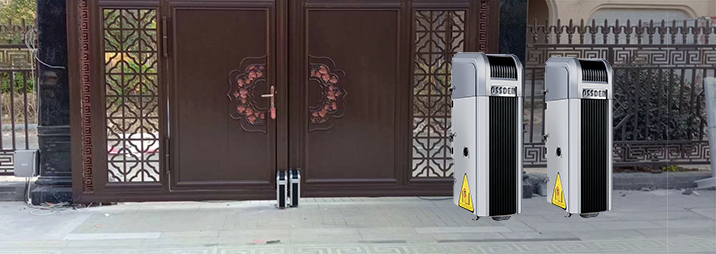What safety features should be considered when installing an automatic gate system?
Automatic gate systems have become increasingly popular for both residential and commercial properties. These systems offer convenience, security, and aesthetic value, making them an attractive choice for property owners. However, it's essential to prioritize safety when installing an automatic gate system. With moving parts and potential hazards, ensuring the safety of individuals, vehicles, and pets is paramount. In this article, we'll discuss the critical safety features that should be considered when installing an automatic gate system.

1. Safety Sensors
Safety sensors are perhaps the most crucial safety feature for any automatic gate system. These sensors detect obstacles in the path of the gate and prevent it from closing when an obstruction is present. There are two primary types of safety sensors:
a. Photoelectric Sensors: These sensors emit a beam of light across the gate's opening and detect if something interrupts the beam. If an obstruction is detected while the gate is closing, it will stop or reverse to prevent injury or damage.
b. Edge Sensors: These sensors are installed on the gate itself and detect pressure or contact. If the gate makes contact with an obstacle, it will reverse direction.
2. Safety Edges
Safety edges are rubberized strips fitted on the edges of the gate or gate post. When these edges encounter an obstacle, they trigger the gate to stop and reverse. Safety edges provide an additional layer of protection, especially in situations where photoelectric sensors may not be suitable, such as low visibility conditions.
3. Emergency Release Mechanism
In case of a power outage or system failure, an emergency release mechanism is vital. This manual release allows the gate to be opened or closed manually, ensuring that individuals and vehicles can still enter or exit the property safely.
4. Auto-Reverse Feature
Modern automatic gate systems come equipped with an auto-reverse feature. If the gate encounters an obstacle while closing, it will automatically reverse direction. This feature is crucial in preventing accidents and injuries.
5. Soft Start and Stop
A soft start and stop mechanism ensures that the gate starts and stops moving gradually, reducing the risk of sudden, jarring movements that could potentially cause harm. This feature is not just for safety but also helps prolong the life of the gate and its components.
6. Warning Lights and Audible Signals
Installing warning lights and audible signals on the gate system can be an effective way to alert pedestrians and drivers to the gate's movements. A flashing light and a warning sound can serve as a clear signal to stay clear of the gate when it's in operation.
7. Locking Mechanisms
To enhance security and safety, some automatic gate systems feature integrated locking mechanisms. These can be particularly important in commercial or industrial settings where unauthorized entry must be prevented. They ensure that the gate remains securely locked when not in use.
8. Regular Maintenance
Maintaining the automatic gate system is another essential aspect of safety. Regular inspections and maintenance by qualified professionals can identify and address potential issues before they become safety hazards. It's crucial to keep the gate system in good working condition, ensuring that all safety features are operational.
Conclusion
When installing an automatic gate system, safety should be a top priority. The right safety features not only protect individuals and property but also provide peace of mind. By incorporating safety sensors, emergency release mechanisms, auto-reverse features, soft start and stop functions, warning signals, and locking mechanisms, property owners can ensure their automatic gate systems provide both convenience and security without compromising safety. Additionally, ongoing maintenance and inspections are key to keeping the system in optimal condition. By prioritizing safety, property owners can enjoy the many benefits of automatic gate systems while minimizing the risks associated with their operation.





